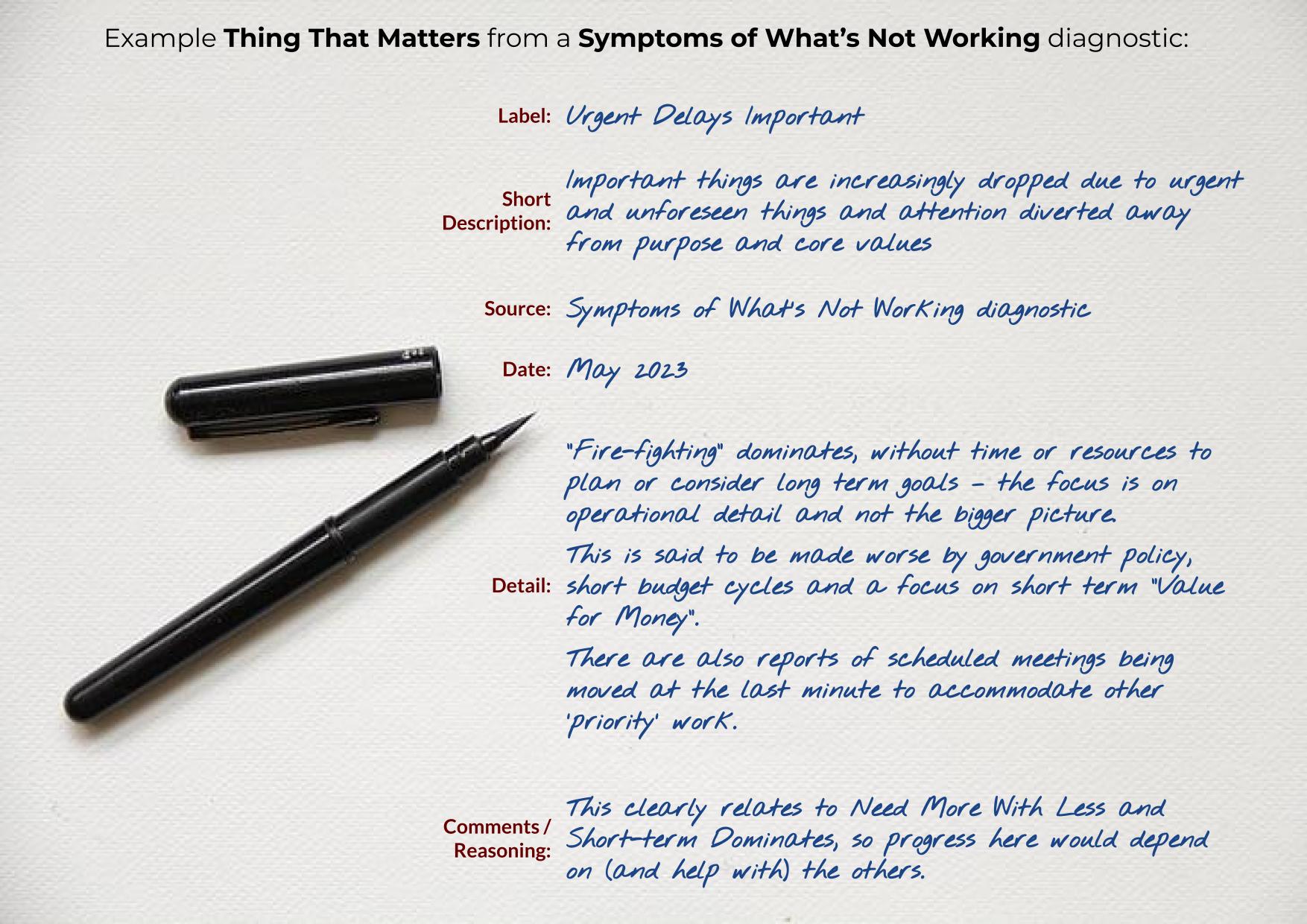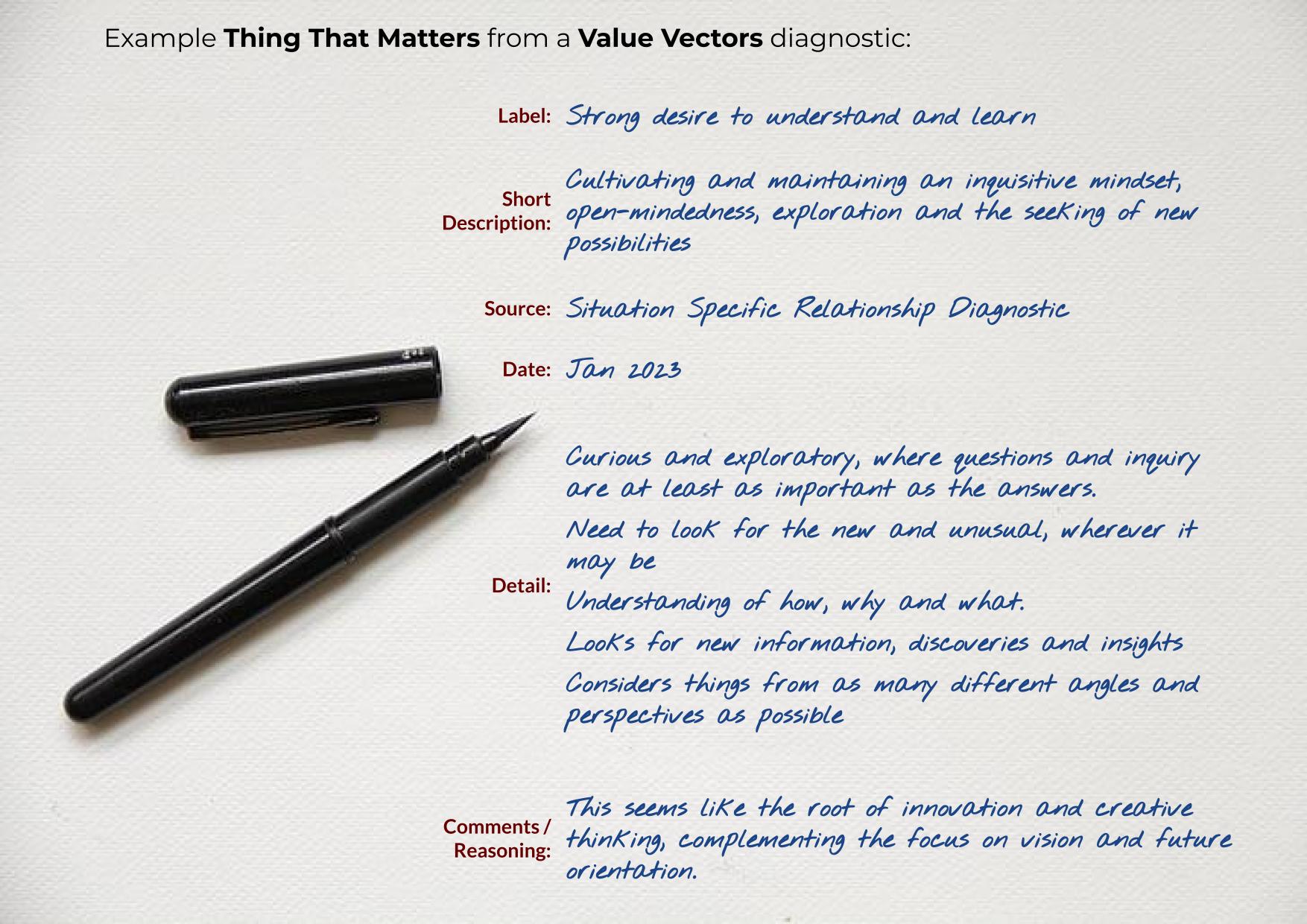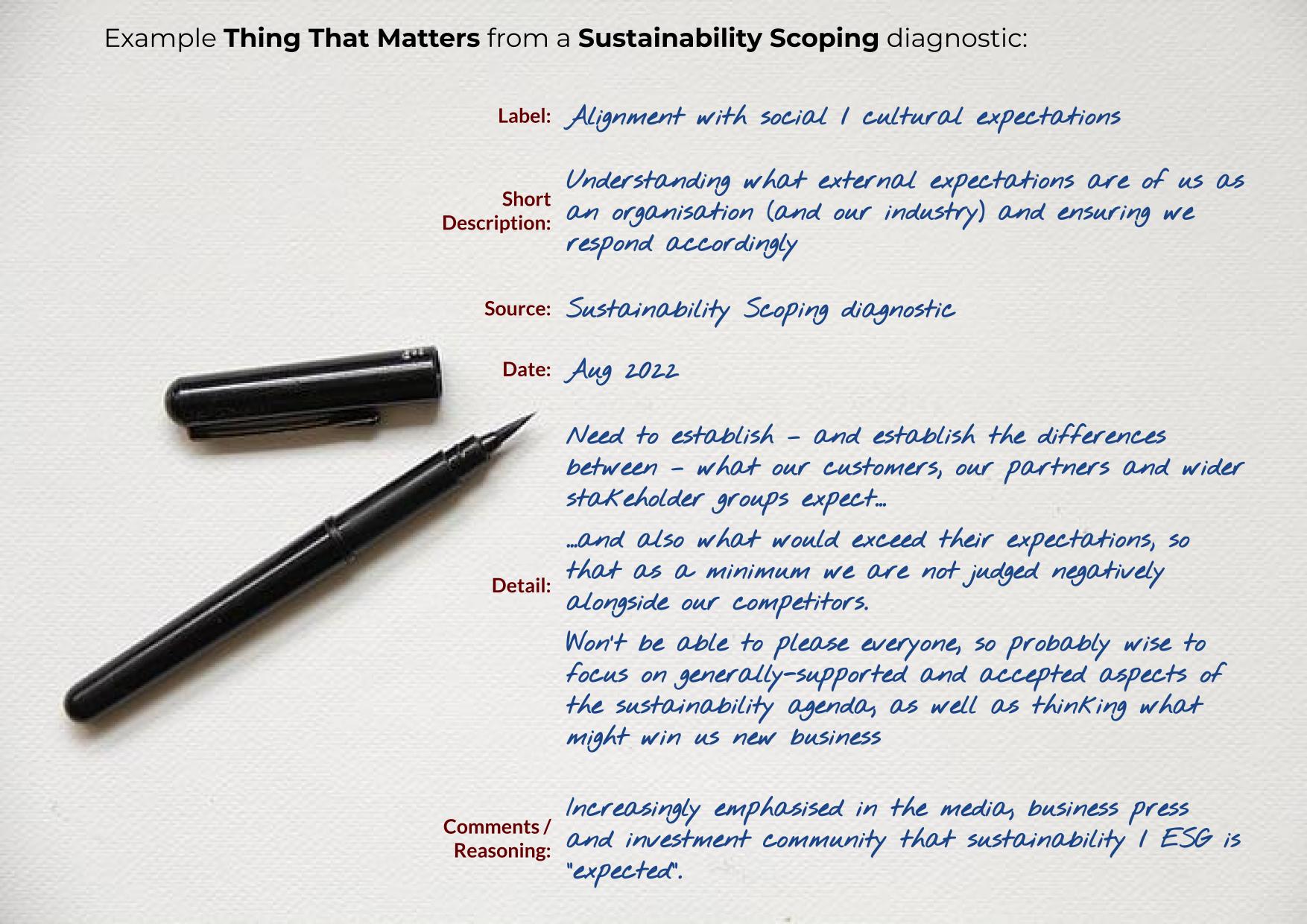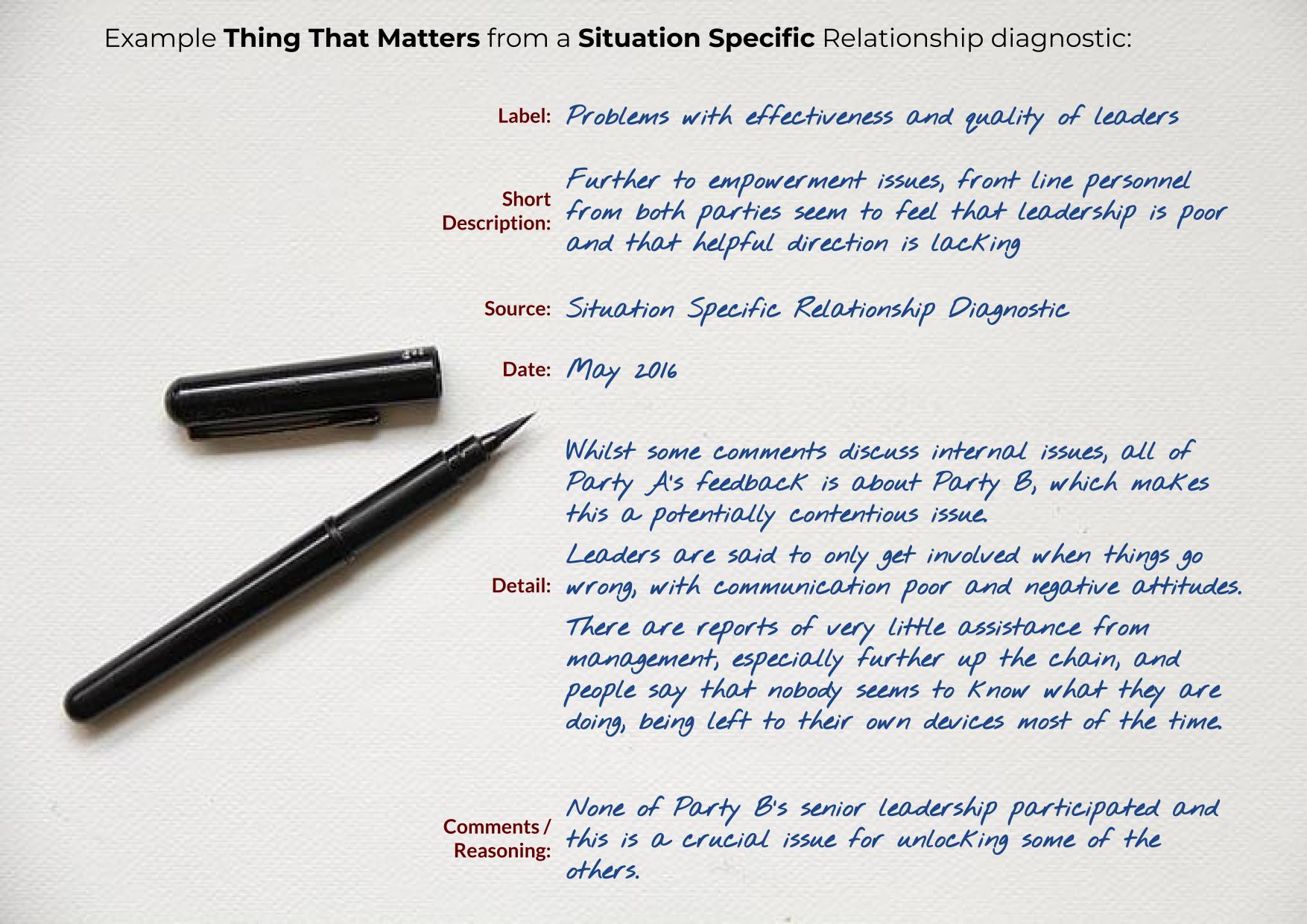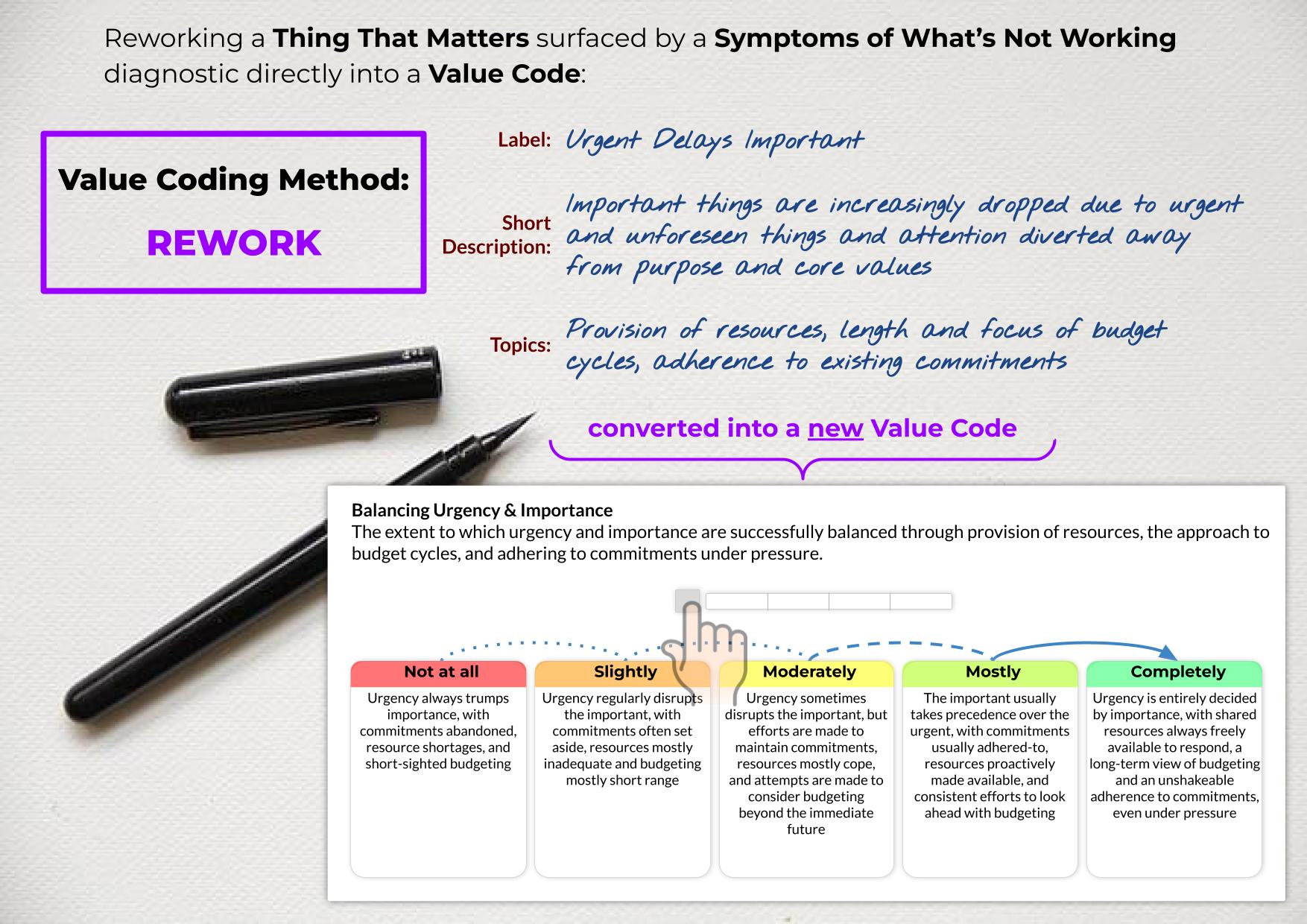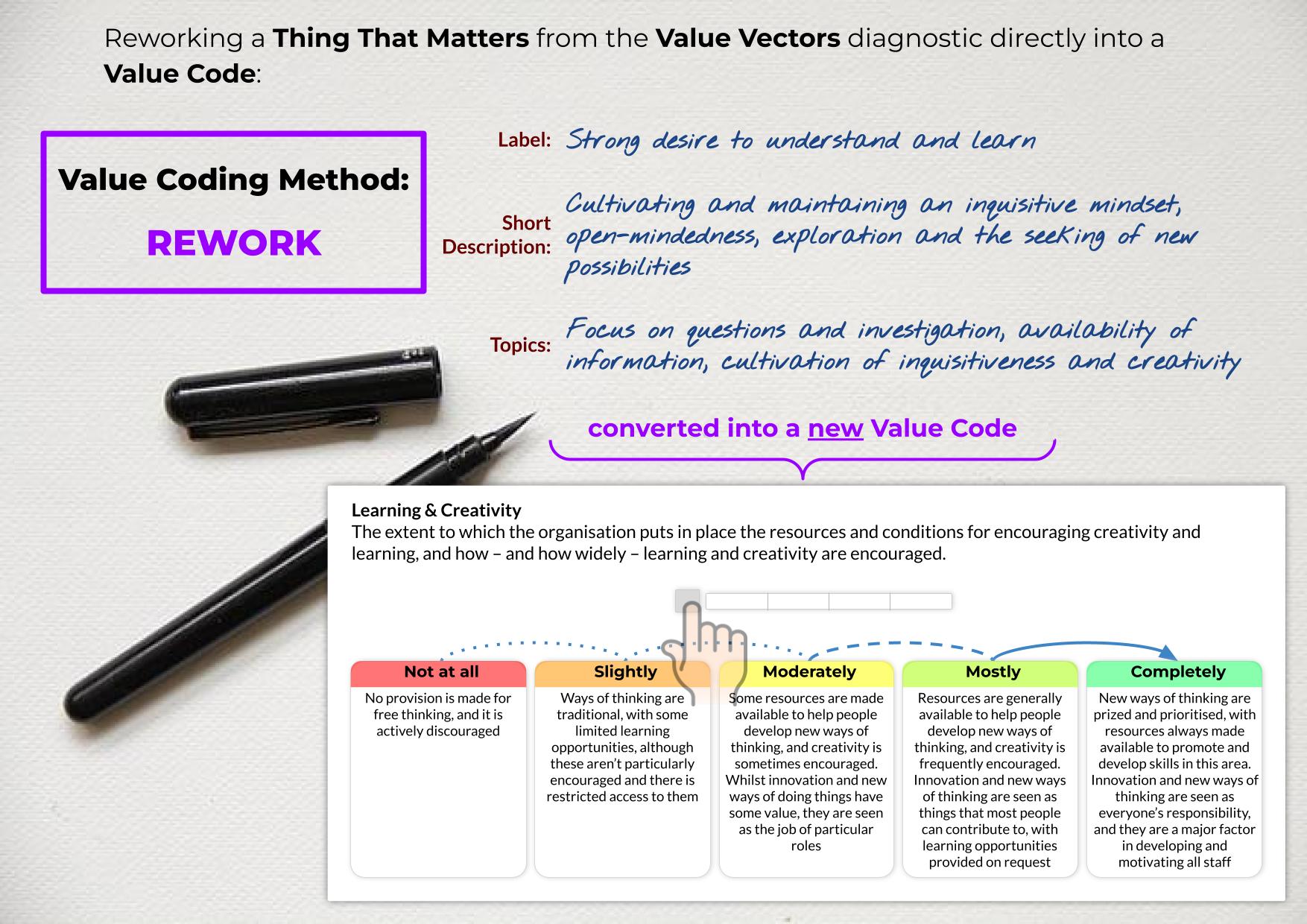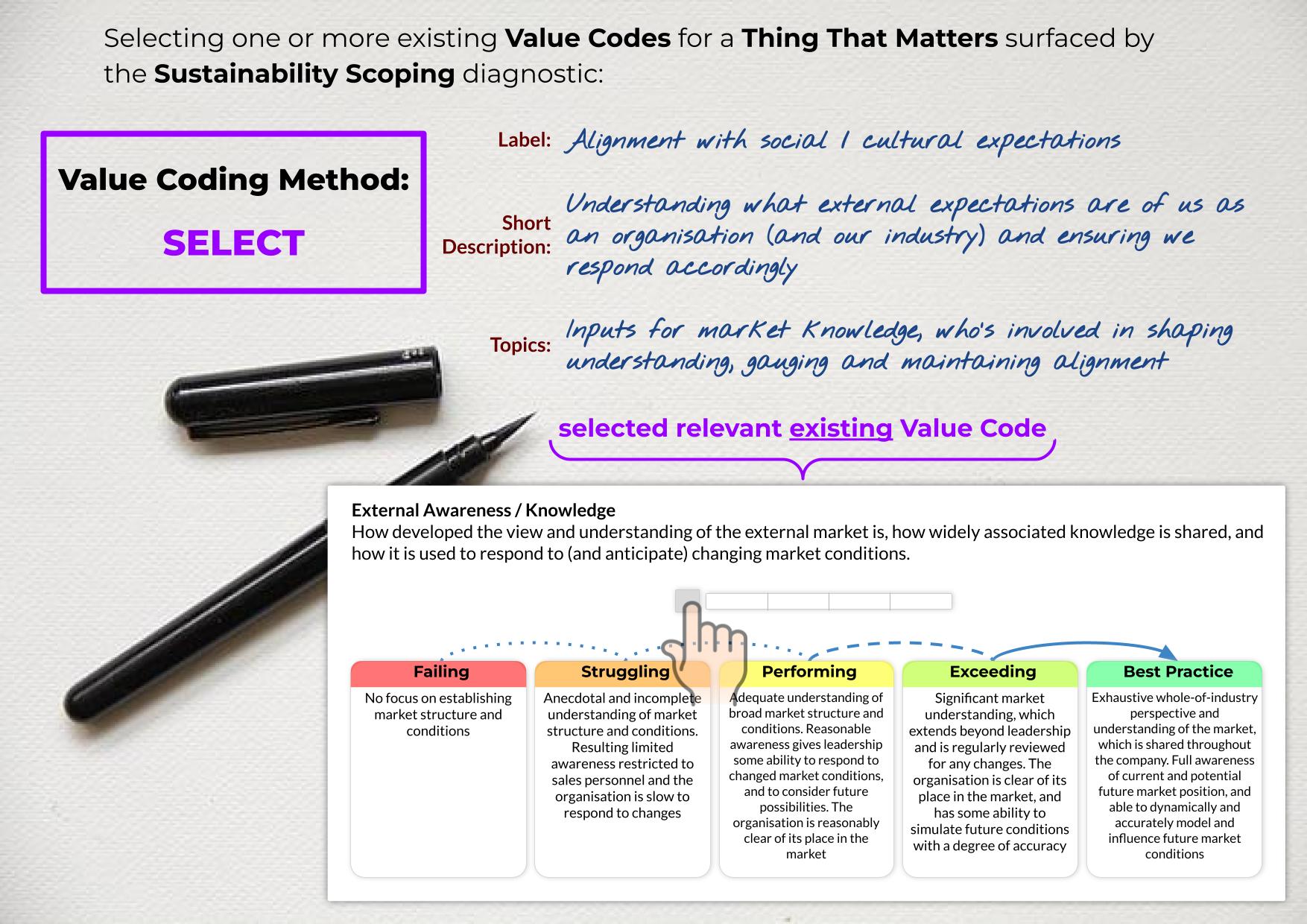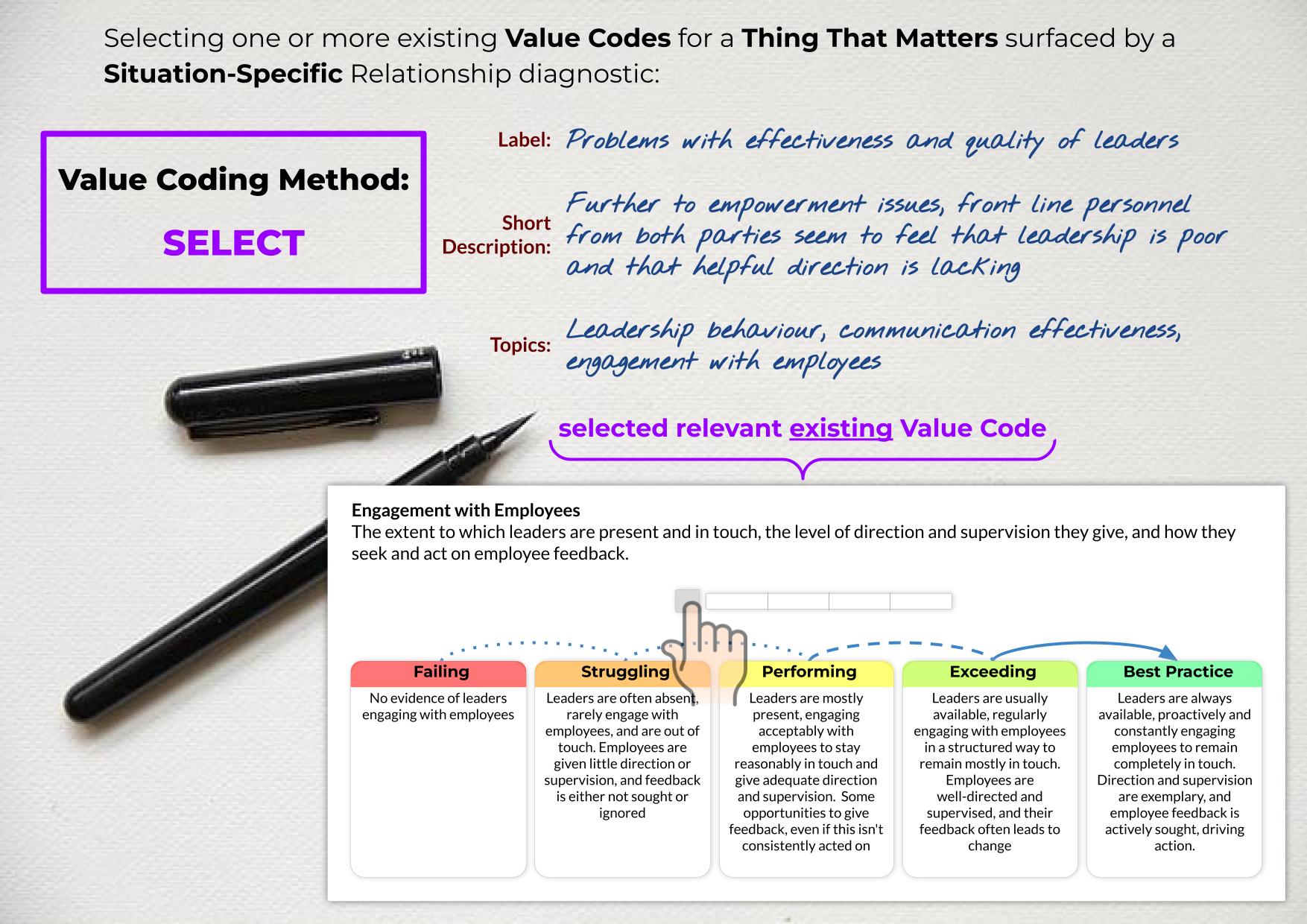Fixing Strategic Relationships: Step 2
Capturing and Refining the Things That Matter is the second of the three steps to Fixing Strategic Relationships:
- Scope & Surface
- Capture & Refine
- Measure & Progress
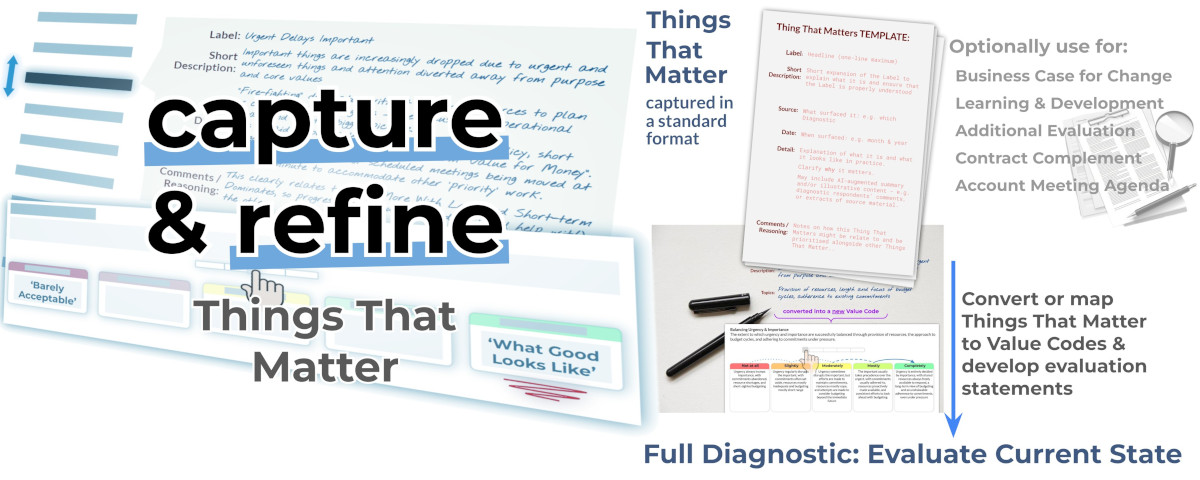
The Things That Matter are then written-up and refined such that they can be “used” (with our recommended template capturing various levels of detail and allowing for later “traceability”):
This format can then be used to readily convert the Things That Matter to be repurposed, with common applications being:
- Account management: if these are the Things That Matter, they ought to be the primary focus of meeting agendas, etc.
- Complement to a contract: this can be regularly updated to capture the fluid current focus of the relationship alongside the formalities of the contract (perhaps even as a contract appendix).
- Learning and training: seeding awareness of what the priorities are and/or helping with onboarding new staff.
- Further prioritisation and ranking: especially where there are too many Things That Matter to address at once, these can be put forward for “voting”, etc.
To further flesh out the Things That Matter, further diagnostics with different focuses can be run, or existing materials consulted – perhaps augmented by open-ended “brainstorming” – to capture anything “missed” so far.
Value Coding
Otherwise, the main priority now is to make the Things That Matter measurable, and that means re-expressing them as Value Codes.
Value Codes describe and address discrete issues and areas of activity, and consist primarily of a label, a description and 1-5 Evaluation Statements that describe a range of less-than-ideal states towards an ideal state:

Value Codes make the subjective Things That Matter objective and measurable: moving from the emotional to the practical, from the abstract to the specific, and from description to action.
The process of Value Coding begins by identifying the topics within scope of each Things That Matter – these are the “threads” that will run throughout the Value Codes – and there are then four methods of establishing what the Value Codes will be (ordered by most common to least):
- Rework directly: rework each Thing That Matters directly into a Value Code: rephrase it neutrally, taking any judgement or “emotion” out of its label, and use a template, guidance and tips that NIP provides to rework the existing content.
- Select from a library: review and select one or more existing Value Codes for each Thing That Matters to address it: NIP has a library of 120 to choose from for starters, which can be optionally adapted.
- NIP Facilitate: tap into NIP’s know-how and knowledge of existing content for us to review and select the most appropriate Value Codes: this ensures the tightest possible coverage and enhances reporting later.
- Author new Value Codes: similar to the “Rework directly” method, but requires more expertise: this is typically in a highly domain-specific context where existing Value Codes are too broad.
The two most common methods can be seen in the following examples:
Once all Value Codes are ready, they can be structured into a diagnostic – organised into related sections – ready to measure and progress the Things That Matter.
Value Codes can also be “published” as a statement of intent and to familiarise people with what good looks like, perhaps creating or adding to any existing contract complement.
What this Step looks like:
Featured content:

